
Following a strong architectural language of repetition, movement, rhythm, and proportion the ‘weeksville heritage center’ designed by American firm caples jefferson architects PC serves as a gateway to a 19th century african-american freedman’s settlement. the sustainably built complex is located in brooklyn, new york and features a new two-story, 23,000 sq ft building and 41,000 sq ft of landscape that redefines the site’s context. — designboom.com
Weeksville Heritage Center is a new sustainable cultural center designed by Caples Jefferson Architects PC. It is a two-story, 23,000 sq ft new building and 41,000 sq ft interpretive landscape, located at the intersection of Buffalo Avenue and Bergen Street in the Crown Heights neighborhood of Brooklyn, NY. In the 1960’s, four remaining buildings from this Brooklyn settlement were rediscovered. through 40 years of impassioned community support, the site eventually grew to serve as a focal african-american heritage site.
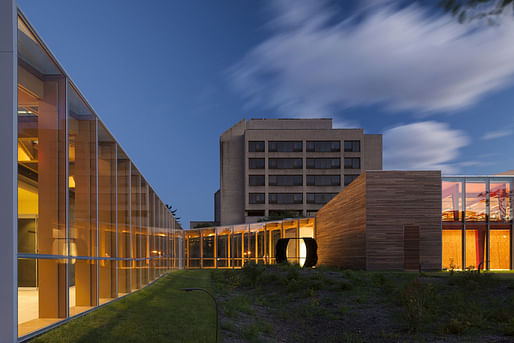 The primary purpose of the new structure and landscape is to serve as a gateway to the historic houses on the premises - remnants of the 19th century free African American community of Weeksville - with state-of-the-art exhibition, performance and educational facilities, as well as to provide a green oasis for visitors and the local community. The main lobby includes introductory exhibits and leads to a gallery, a lecture and performance space for 200, classrooms and a library resource center for visiting scholars.
The primary purpose of the new structure and landscape is to serve as a gateway to the historic houses on the premises - remnants of the 19th century free African American community of Weeksville - with state-of-the-art exhibition, performance and educational facilities, as well as to provide a green oasis for visitors and the local community. The main lobby includes introductory exhibits and leads to a gallery, a lecture and performance space for 200, classrooms and a library resource center for visiting scholars.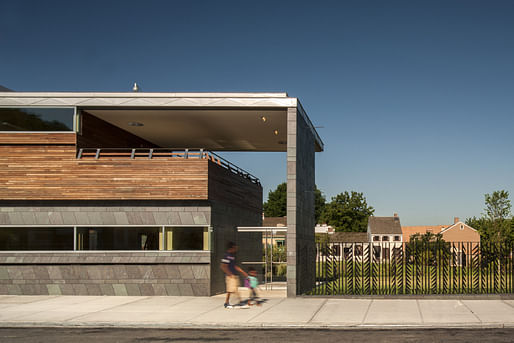
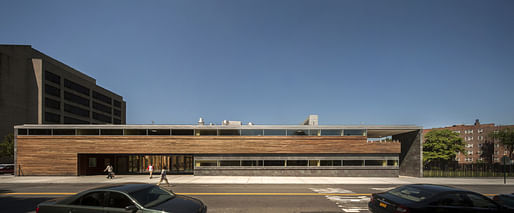

Project Concept: Modern Syntax/African Riffs
Weeksville Heritage Center is a unique urban design project in which a modern architectural syntax of simple forms, strip windows, and glass passageways is impacted by repeated African riffs. The riffs are variations that provide a visual counterpoint. The riffs are embedded in construction, in structural elements, such as the joints in paving and stone, in the choice of colors and materials, and in the details like the fence posts and the frit in the sunshading glass. The modern syntax and African riffs, although independent from each other, harmonize when experienced as an entirety.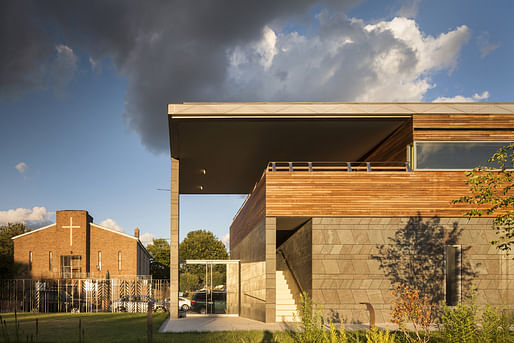
The subliminal perceptual stimuli—decoration and sculpture unique to Africa, the architectural ideas of repetition, movement, rhythm, and proportion—are revealed by sunlight. Natural light enriches these riffs by adding shadows, moods, and ever-changing perspectives.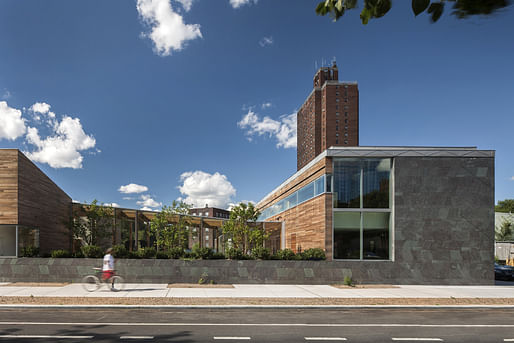
Placed within the historic site of Weeksville Heritage Center and its evocative landscape, the new work redefines the context of Weeksville at this specific time and place.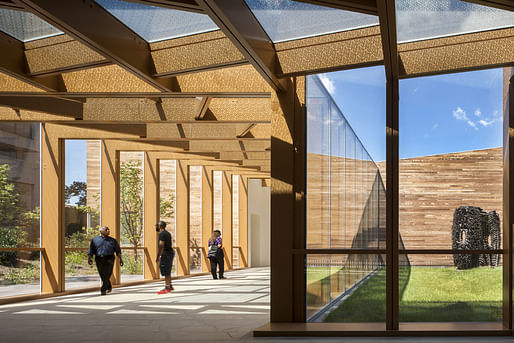
The rolling mown field, and areas of wildflowers evoke the community’s agricultural origins. The old trail ‘Hunterfly Road’ disappears and reappears before the houses in a ‘ghost landscape’ extrapolated from old maps.
In deference to the historic structures, the building is kept intentionally low, sited to protect the view of the old houses, while providing the broad portal gateway along the old Indian trail to the houses and long open views of the historic site through the transparent corridors.
Sustainability
The new building project is targeting a Gold rating under LEED 2.1. The new building's footprint occupies only about one-fifth of the project site, a rarity within the five boroughs of New York City, allowing the major portion of the site to become open green space.
Buried under this landscape are seven drywells, providing on-site percolation of storm water, and 48 geothermal wells drilled to a depth of 470 feet. The extensive closed-loop geothermal well field serves eleven water-to-air heat pump air handling units, considerably reducing the new building's reliance on fossil fuels for heating and cooling.
In keeping with the overall design intention to create an open, accessible community space, all interior spaces are flooded with daylight, providing a multiplicity of views of the historic site and the surrounding neighborhood.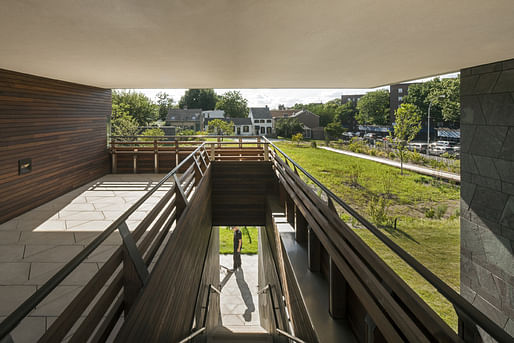
Aerial Views 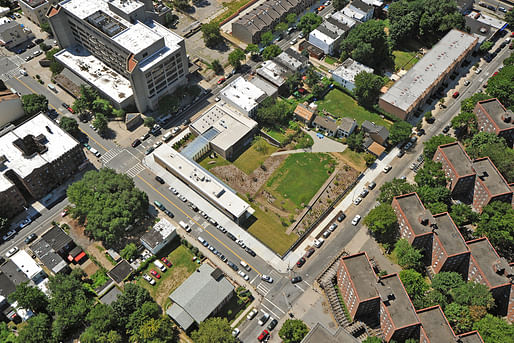

Architectural Photography: Nic Lehoux
Aerial Photography: Julian Olivas
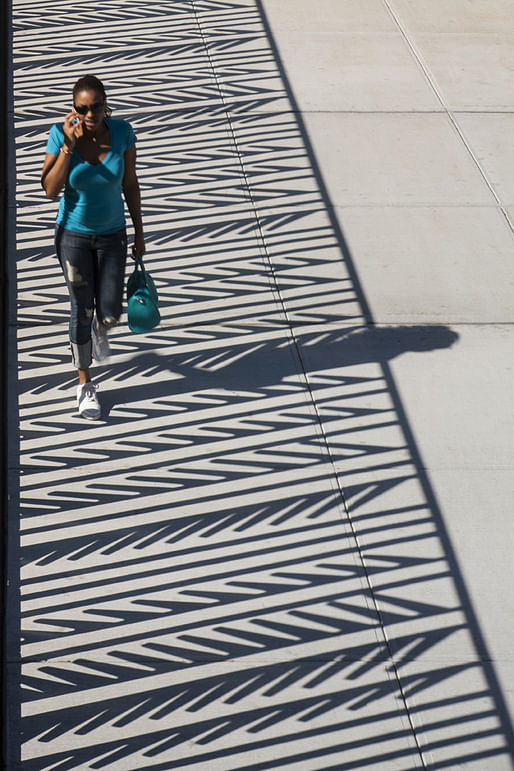
No Comments
Block this user
Are you sure you want to block this user and hide all related comments throughout the site?
Archinect
This is your first comment on Archinect. Your comment will be visible once approved.